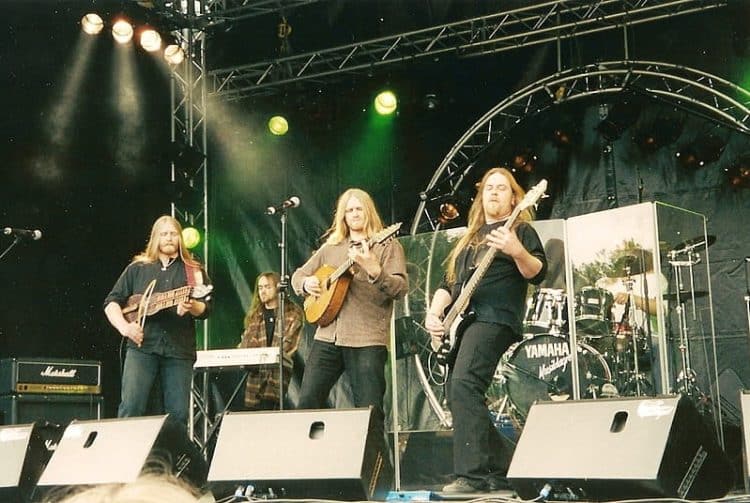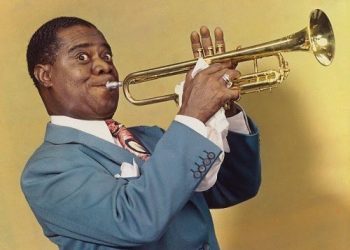Folk bands, rooted in traditions that span cultures and generations, form a rich tapestry within the diverse landscape of music. Characterized by acoustic instruments, storytelling lyrics, and a deep connection to cultural heritage, folk music reflects the essence of community and the human experience.
The genre encompasses a wide array of styles, from traditional folk ballads passed down through generations to contemporary interpretations that incorporate elements of rock, indie, and world music. Folk bands often employ instruments such as acoustic guitars, banjos, fiddles, mandolins, and harmonicas, creating a warm and intimate sonic palette that resonates with authenticity.
Central to the allure of folk music is its capacity to convey universal themes of love, loss, nature, and social commentary. Folk bands serve as cultural custodians, preserving traditional tunes while breathing new life into age-old stories. The genre’s communal nature often involves audience participation, fostering a sense of shared experience during live performances.
Not confined by boundaries, folk bands embrace diversity, drawing inspiration from global influences and regional nuances. Whether capturing the essence of Appalachian balladry, Irish storytelling, or the protest traditions of American folk, these bands create a timeless bridge between the past and the present. Through their melodies and narratives, folk bands offer listeners a poignant journey that reflects the enduring power of storytelling through music.
1. John Prine
John Prine, born on October 10, 1946, in Maywood, Illinois, was an American singer-songwriter renowned for his heartfelt and often humorous storytelling within the realms of folk and country music. With a career spanning over five decades, Prine left an indelible mark on the music world, celebrated for his insightful lyrics, soulful melodies, and distinctive gravelly voice.
Prine’s debut self-titled album, released in 1971, featured enduring classics like “Angel from Montgomery” and “Sam Stone.” His songwriting prowess, marked by keen observations on human nature, earned him acclaim and admiration from peers and fans alike. His ability to convey complex emotions with simplicity and sincerity set him apart as a true troubadour.
Throughout his career, John Prine continued to release albums that showcased his versatility, ranging from the poignant “Hello in There” to the irreverently humorous “Illegal Smile.” His songs were covered by numerous artists, and he collaborated with musicians across genres, demonstrating the universal appeal of his music.
In 2020, Prine succumbed to complications related to COVID-19, leaving behind a legacy that resonates with authenticity and emotional depth. Inducted into the Songwriters Hall of Fame and awarded multiple Grammy Awards, including a Lifetime Achievement Award, John Prine’s impact on American music endures as a testament to the enduring power of storytelling through song.
2. Steeleye Span
Steeleye Span, formed in 1969 in London, England, stands as a pioneering and influential folk-rock band known for their innovative approach to traditional English folk music. The band’s name is derived from a character in the traditional song “Horkstow Grange.” Steeleye Span has seen numerous lineup changes over the years, with members including Maddy Prior, Tim Hart, Martin Carthy, Ashley Hutchings, and Rick Kemp.
Steeleye Span’s early albums, such as “Hark! The Village Wait” (1970) and “Please to See the King” (1971), showcased their commitment to reviving and reinterpreting centuries-old folk songs. Maddy Prior’s haunting vocals, often accompanied by a mix of electric and acoustic instrumentation, gave the band a distinctive sound that set them apart in the folk-rock genre.
The breakthrough came with “Parcel of Rogues” (1973), which featured a more electric and rock-oriented sound. The album included the memorable track “Gaudete,” a medieval Christmas carol sung in Latin, which achieved commercial success and introduced Steeleye Span to a wider audience.
Throughout their career, Steeleye Span continued to blend traditional folk themes with contemporary arrangements, exploring historical narratives, mythologies, and tales of the supernatural. Their albums, including “All Around My Hat” (1975) and “Commoners Crown” (1975), solidified their status as folk-rock innovators.
Steeleye Span’s enduring appeal is rooted in their ability to seamlessly merge the old with the new, preserving the essence of traditional folk music while injecting it with a fresh, dynamic energy. Their contributions to the folk-rock movement and their dedication to storytelling through music have left an enduring legacy within the broader landscape of folk music.
3. Neil Young
Neil Young, born in 1945 in Toronto, Canada, is a prolific singer-songwriter and musician with a career spanning several decades. A key figure in the folk rock and country rock movements, Neil Young has consistently pushed musical boundaries, exploring a diverse range of genres, including rock, blues, grunge, and electronic music.
Young initially gained prominence as a member of Buffalo Springfield, contributing to hits like “For What It’s Worth.” However, it was with his solo career that he truly left an indelible mark on the music landscape. Albums like “After the Gold Rush,” “Harvest,” and “Rust Never Sleeps” showcase his songwriting prowess and distinctive voice.
Known for his raw and emotive guitar playing, Neil Young has created a vast and varied catalog of music. Whether performing with the acoustic folk-inspired side of his artistry or delving into electric, distorted rock, Young’s authenticity and honesty shine through.
Neil Young’s willingness to tackle social and political issues in his music is evident in songs like “Ohio” and “Rockin’ in the Free World.” His advocacy for environmental and social causes has further endeared him to fans around the world.
With a career marked by experimentation and a refusal to be confined to a single genre, Neil Young remains a revered figure in the music industry. His enduring influence and commitment to artistic integrity have earned him a place as one of the most respected and influential musicians in rock and folk history.
4. Crosby, Stills, Nash, & Young
Crosby, Stills, Nash & Young (CSNY), a supergroup formed in the late 1960s, brought together four acclaimed musicians: David Crosby, Stephen Stills, Graham Nash, and Neil Young. Each member had already established themselves in notable bands—Crosby in The Byrds, Stills in Buffalo Springfield, and Nash in The Hollies—before coming together in 1969 to create a sound that blended folk, rock, and harmonious vocals.
The quartet’s self-titled debut album, “Crosby, Stills & Nash,” released in 1969, featured iconic tracks like “Suite: Judy Blue Eyes” and “Marrakesh Express.” Neil Young joined the group for their second album, “Déjà Vu” (1970), contributing classics such as “Helpless” and “Woodstock.” The chemistry between these four distinctive voices and songwriting styles resulted in a harmonious and influential sound that defined the folk-rock movement.
CSNY’s music often reflected the turbulent social and political climate of the 1960s and 1970s. Songs like “Ohio” and “Find the Cost of Freedom” addressed issues such as the Vietnam War and civil unrest, cementing the group’s role as a voice for a generation.
Despite intermittent collaborations and solo pursuits, CSNY’s impact on the folk-rock genre remains profound. Their intricate vocal harmonies, poignant lyrics, and musical innovation continue to resonate with audiences, making Crosby, Stills, Nash & Young a revered and timeless collective in the history of rock music.
5. John Denver
John Denver, born Henry John Deutschendorf Jr. in 1943, was an American singer-songwriter, musician, and environmental activist who achieved widespread popularity in the 1970s. Denver’s music is characterized by his soothing voice, heartfelt lyrics, and a blend of folk, country, and pop influences.
Denver’s breakthrough came with hits like “Take Me Home, Country Roads,” “Annie’s Song,” and “Rocky Mountain High.” His songs often celebrated nature, love, and a sense of home, reflecting his passion for environmental conservation and his experiences growing up in the Rocky Mountains.
Beyond his success as a musician, John Denver was known for his philanthropy and activism. He co-founded the charitable organization “Windstar Foundation,” dedicated to environmental sustainability and global peace.
Denver’s popularity extended beyond the United States, making him an international sensation. His wholesome image, genuine lyrics, and melodic compositions resonated with a diverse audience. Albums like “Poems, Prayers & Promises” and “Back Home Again” contributed to his chart-topping success.
Tragically, John Denver passed away in 1997 in a plane crash. Despite his untimely death, his legacy endures through his timeless music and the positive impact he made in environmental activism. John Denver’s contributions to the folk and country genres, along with his commitment to making the world a better place, have left an enduring mark on the fabric of American music and culture.
6. Donovan
Donovan, born Donovan Philips Leitch on May 10, 1946, in Glasgow, Scotland, is a singer-songwriter and folk-rock icon who emerged during the 1960s folk revival. With his distinctive voice, poetic lyrics, and innovative approach to blending folk, rock, and psychedelia, Donovan became a prominent figure in the folk music scene.
Donovan’s early career saw him associated with the British folk movement, drawing inspiration from traditional folk while incorporating a contemporary and experimental edge. His breakout album, “Sunshine Superman” (1966), featured hits like the title track and “Mellow Yellow,” showcasing his eclectic musical influences and visionary songwriting.
The following album, “A Gift from a Flower to a Garden” (1967), continued Donovan’s exploration of diverse styles and themes, ranging from acoustic folk to psychedelia. His association with influential musicians like The Beatles and his involvement in the burgeoning counterculture solidified his place as a key figure in the folk-rock movement.
Donovan’s lyrics often reflected his interest in mysticism, spirituality, and nature. Songs like “Hurdy Gurdy Man” and “Atlantis” revealed a fascination with Eastern philosophy and mythology, contributing to the broader cultural and musical shifts of the 1960s.
As the 1970s progressed, Donovan’s music evolved to include elements of jazz, pop, and rock. While he may not have achieved the same commercial success as some of his peers, his influence persisted, and he continued to release albums into the 21st century.
Donovan’s impact on the folk and rock genres, coupled with his charismatic stage presence and unique songwriting, has earned him a lasting legacy. His ability to bridge the gap between traditional folk and the experimental spirit of the 1960s made him a distinctive voice in an era marked by musical exploration and cultural revolution.
7. Kris Kristofferson
Kris Kristofferson, born on June 22, 1936, in Brownsville, Texas, is a multifaceted artist renowned for his contributions as a singer-songwriter, actor, and accomplished musician. Emerging in the late 1960s and 1970s, Kristofferson became a central figure in the outlaw country music movement, known for his introspective and narrative-driven songwriting.
After completing a Rhodes Scholarship and serving in the U.S. Army, Kristofferson moved to Nashville to pursue a career in music. His early days in the industry were marked by songwriting success, with hits like “Me and Bobby McGee” (made famous by Janis Joplin) and “Help Me Make It Through the Night” (recorded by various artists).
Kris Kristofferson’s solo career took flight with his debut album, “Kristofferson” (1970), which featured tracks like “Sunday Mornin’ Comin’ Down.” His raw and unfiltered songwriting resonated with audiences, and subsequent albums, including “The Silver Tongued Devil and I” (1971) and “Border Lord” (1972), further solidified his reputation.
Apart from his musical achievements, Kristofferson also pursued a successful acting career, starring in films such as “A Star Is Born” (1976) alongside Barbra Streisand. His roles in movies like “Alice Doesn’t Live Here Anymore” and “Blade” added to his diverse artistic portfolio.
Known for his gravelly voice and poetic lyrics that often explored themes of love, freedom, and the human condition, Kris Kristofferson remains a respected figure in the country and folk music scenes. His impact extends beyond his own recordings, as his songs have been covered by a multitude of artists, and his influence as a songwriter and performer has left an enduring mark on American music.
8. Harry Chapin
Harry Chapin, born in 1942, was an American singer-songwriter known for his poignant storytelling through music and his philanthropic endeavors. Chapin’s career took off in the 1970s, and he became recognized for his narrative folk-rock style and socially conscious lyrics.
Chapin’s breakthrough came with his hit song “Taxi” in 1972, followed by other well-known tracks like “W*O*L*D,” “Cat’s in the Cradle,” and “Circle.” His storytelling ability, often depicting relatable characters and situations, set him apart in the singer-songwriter genre.
Beyond his success in music, Harry Chapin was deeply committed to humanitarian causes. He co-founded the organization “World Hunger Year” (later renamed WhyHunger) with radio personality Bill Ayres, focusing on eradicating hunger and poverty. Chapin’s dedication to activism extended to benefit concerts and fundraising efforts.
Tragically, Harry Chapin’s life was cut short in 1981 when he died in a car accident at the age of 38. Despite his relatively brief career, Chapin’s impact on the singer-songwriter genre and his legacy of humanitarian work have endured. His ability to blend storytelling with melody, combined with his advocacy for social change, has left an indelible mark on the folk and rock landscape.
9. Joni Mitchell
Joni Mitchell, born Roberta Joan Anderson in 1943, is a Canadian singer-songwriter and painter who stands as one of the most influential figures in the folk and rock music genres. Mitchell’s career, spanning several decades, has been marked by her innovative songwriting, unique guitar tunings, and expressive vocal style.
In the late 1960s and throughout the 1970s, Mitchell released a series of critically acclaimed albums, including “Blue,” “Court and Spark,” and “Hejira.” Her poetic lyrics explored themes of love, identity, and societal issues, capturing the zeitgeist of the era. Songs like “A Case of You,” “Big Yellow Taxi,” and “Woodstock” became iconic representations of her artistry.
Joni Mitchell’s musical style evolved over the years, incorporating elements of jazz, pop, and world music. Her experimentation with different genres and refusal to be confined to a specific label showcased her artistic versatility.
In addition to her contribution to music, Mitchell’s talents extend to visual arts, as she is also a respected painter. Her impact on the cultural landscape has earned her numerous awards, including multiple Grammy Awards and an induction into the Rock and Roll Hall of Fame.
Joni Mitchell’s influence on subsequent generations of musicians is profound, with artists across genres citing her as an inspiration. Her ability to convey emotion through poetic lyrics and her innovative approach to music solidify her as a true icon in the realm of folk and rock.
10. James Taylor
James Taylor, born on March 12, 1948, in Boston, Massachusetts, is a highly acclaimed singer-songwriter and guitarist known for his soulful voice, introspective lyrics, and enduring contributions to the folk and soft rock genres. Emerging in the late 1960s, Taylor’s music has resonated with audiences for its emotional depth and timeless appeal.
Taylor’s self-titled debut album, “James Taylor” (1968), established him as a prominent figure in the folk scene. However, it was his breakthrough album, “Sweet Baby James” (1970), that propelled him to mainstream success. The title track and “Fire and Rain” became iconic songs of the era, showcasing Taylor’s gift for storytelling and melody.
Throughout the 1970s, James Taylor continued to release critically acclaimed albums, including “Mud Slide Slim and the Blue Horizon” (1971) and “JT” (1977). His introspective and confessional songwriting, often drawing from personal experiences, resonated with a broad audience.
Notable for his warm and comforting voice, Taylor’s repertoire includes hits like “You’ve Got a Friend,” “Carolina in My Mind,” and “Shower the People.” His cover of Carole King’s “You’ve Got a Friend” earned him a Grammy Award for Best Male Pop Vocal Performance in 1971.
In addition to his musical achievements, James Taylor’s influence extends to collaborations with other artists, social and environmental activism, and his role as a cultural ambassador. Inducted into the Rock and Roll Hall of Fame in 2000, Taylor’s enduring career has left an indelible mark on the singer-songwriter tradition, making him a beloved and iconic figure in American music.
11. Bob Dylan
Bob Dylan, born Robert Zimmerman in 1941, is an American singer-songwriter and one of the most influential figures in the history of popular music. With a career spanning over six decades, Dylan has been a pivotal force in shaping folk, rock, and protest music.
Dylan’s early work in the 1960s, marked by politically charged and socially conscious folk songs, had a profound impact on the burgeoning counterculture. Songs like “Blowin’ in the Wind” and “The Times They Are a-Changin'” became anthems for the civil rights and anti-war movements.
In the mid-1960s, Dylan underwent a significant stylistic shift, adopting an electric sound with albums like “Bringing It All Back Home” and “Highway 61 Revisited.” This move stirred controversy but showcased his ability to evolve and experiment with musical genres.
Dylan’s lyrical prowess, characterized by vivid storytelling, poetic imagery, and social commentary, has earned him the Nobel Prize in Literature in 2016, marking the first time a songwriter received the prestigious award.
Throughout his career, Bob Dylan continued to reinvent himself, exploring various musical styles, including country, rock, and blues. Albums like “Blood on the Tracks,” “Desire,” and “Time Out of Mind” showcase his enduring relevance and creativity.
Dylan’s impact on popular music cannot be overstated, influencing generations of musicians and songwriters. His ability to capture the essence of the times and adapt to changing musical landscapes has solidified his status as a cultural icon and a living legend in the world of music.
12. Pete Seeger
Pete Seeger (1919-2014), born in Patterson, New York, was a legendary American folk singer, songwriter, and social activist who left an indelible mark on the folk music landscape. A masterful musician and a passionate advocate for social justice, Seeger’s career spanned over seven decades, and his influence extended far beyond the realm of music.
As a key figure in the American folk revival of the 1950s and 1960s, Pete Seeger played a crucial role in popularizing traditional folk songs and introducing new ones that reflected the spirit of social and political activism. He was a member of The Weavers, a folk group that achieved chart-topping success with hits like “Goodnight, Irene.”
Seeger’s solo career was characterized by his commitment to using music as a tool for change. Songs like “Where Have All the Flowers Gone,” “If I Had a Hammer,” and “Turn! Turn! Turn!” became anthems for the civil rights and anti-war movements. His rendition of “We Shall Overcome” became synonymous with the struggle for civil rights.
Despite facing blacklisting and political persecution during the McCarthy era, Pete Seeger’s unwavering dedication to his principles and his belief in the power of music to effect change prevailed. He continued to perform and advocate for environmental causes, leading to the creation of the iconic sloop Clearwater to promote awareness about the Hudson River.
Seeger’s impact extended beyond his musical contributions. His work laid the groundwork for subsequent generations of folk musicians and activists. Inducted into the Rock and Roll Hall of Fame in 1996, Pete Seeger’s legacy is one of artistic integrity, social consciousness, and the belief that music can inspire positive change in the world.
13. Leonard Cohen
Leonard Cohen, born in 1934, was a Canadian singer-songwriter, poet, and novelist who became an iconic figure in the world of music and literature. Known for his deep, gravelly voice and poetic lyrics, Cohen’s work transcended genres, blending elements of folk, rock, and blues.
Cohen’s career took off in the late 1960s with the release of his debut album, “Songs of Leonard Cohen.” His songwriting, marked by introspection, spirituality, and a profound exploration of the human condition, set him apart in the folk and singer-songwriter genres.
Some of Cohen’s most enduring and influential songs include “Hallelujah,” “Suzanne,” “Bird on the Wire,” and “Chelsea Hotel #2.” “Hallelujah,” in particular, has become a timeless classic and has been covered by numerous artists.
Beyond his music, Cohen was a published poet and novelist, further showcasing his literary prowess. His lyrics often read like poetry, reflecting a deep understanding of language and symbolism. Cohen’s influence extended beyond the realm of music, and he was often celebrated for his intellectual contributions to art and culture.
Leonard Cohen continued to produce music into his later years, releasing critically acclaimed albums like “You Want It Darker.” His live performances were characterized by a sense of intimacy and sincerity, creating a profound connection with his audience.
Cohen’s passing in 2016 marked the end of an era, but his legacy lives on through his timeless music and the impact he made on the world of songwriting and poetry. Leonard Cohen remains a revered and beloved figure in the pantheon of artistic expression.
14. Simon & Garfunkel
Simon & Garfunkel, consisting of singer-songwriter Paul Simon and singer Art Garfunkel, were an iconic folk-rock duo that emerged in the 1960s. Their harmonious blend of voices, poignant songwriting, and timeless melodies made them one of the most celebrated musical partnerships in the history of popular music.
The duo’s career took off with their debut album, “Wednesday Morning, 3 A.M.” (1964), but it was the electrifying success of “The Sound of Silence” in 1965 that propelled them to international fame. The album “Sounds of Silence” featured a mix of folk and rock elements and became a cornerstone of their early work.
Simon & Garfunkel continued to release a string of critically acclaimed albums, including “Parsley, Sage, Rosemary and Thyme” (1966) and “Bookends” (1968), showcasing their intricate harmonies and Paul Simon’s poetic songwriting. The soundtrack for the film “The Graduate” (1968) featured some of their most iconic songs, including “Mrs. Robinson.”
In 1970, the duo released their final studio album, “Bridge over Troubled Water,” which included the title track, a timeless classic that won several Grammy Awards. The album marked the culmination of their musical partnership, as Simon pursued a solo career, leading to the temporary dissolution of the duo.
Despite their relatively short collaboration, Simon & Garfunkel’s impact endured. Their music captured the spirit of the 1960s, addressing social issues and personal reflections. Songs like “The Boxer,” “Scarborough Fair/Canticle,” and “Homeward Bound” remain enduring classics, and the duo’s ability to convey emotion through their harmonies has left an indelible mark on the folk-rock genre.
15. Cat Stevens
Cat Stevens, born Steven Demetre Georgiou in 1948, is a British singer-songwriter whose music, primarily from the late 1960s to the late 1970s, left an indelible mark on the folk and rock genres. Stevens’ introspective and soulful compositions, often accompanied by his warm vocals and acoustic guitar, connected with a diverse audience.
In the early part of his career, Cat Stevens gained attention with albums like “Matthew and Son” and “Tea for the Tillerman.” The latter, released in 1970, featured some of his most well-known songs, including “Wild World,” “Father and Son,” and “Morning Has Broken.” These songs showcased Stevens’ ability to blend folk, pop, and rock influences.
In the mid-1970s, Stevens underwent a significant personal and spiritual transformation, leading him to convert to Islam. He changed his name to Yusuf Islam and stepped away from the music industry for several decades. During this period, he focused on philanthropy and humanitarian efforts.
In the 2000s, Yusuf Islam returned to music, releasing new albums under his former stage name, Cat Stevens. These included “An Other Cup” (2006) and “Tell ‘Em I’m Gone” (2014), marking a return to his folk roots.
Cat Stevens’ impact goes beyond his musical contributions; his songs often carried messages of peace, spirituality, and introspection. Songs like “Peace Train” and “Where Do the Children Play?” remain timeless expressions of his artistic and philosophical outlook.
Cat Stevens’ enduring legacy is a testament to the emotional depth and sincerity he brought to his music, making him a cherished figure in the folk and rock canon.









